Gaming Projectors
Choosing the best Gaming Projector
What type of projector is required for gaming?
What is an Enhanced Gaming Mode?
What is a projectors Input Lag?
How bright should a gaming projector be?
Full HD or 4K for gaming?
What gaming projectors do you recommend?
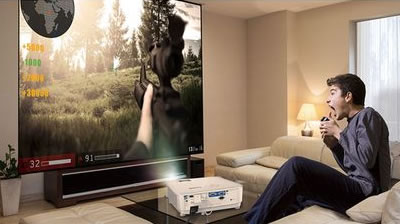
Absolutely. A good quality projector can match the quality of a TV whilst also providing a far more immersive large-screen experience. Projectors usually will feature the same HDMI connection as on a TV; therefore, any modern games console or PC can be connected easily.
Whilst any reasonable projector is capable of being used for games, the responsiveness and overall quality of the image will vary between models. For best results we recommend a projector designed for home theatre use. These home theatre projectors tend to feature improved contrast levels, colour reproduction, and generally are relatively quiet. A home theatre projector with an added ‘gaming mode’ would be ideal. The gaming mode reduces some image processing functions to decrease input lag, which anyone who plays fast motion 1st person shooter or racing games would appreciate.
Gaming projectors and some home projectors will feature gaming modes that may also include an Enhanced Gaming Mode. Whilst a typical gaming mode can improve contrast levels and make tweaks to colour, an enhanced gaming mode goes further with significant reductions in image processing to provide the best input lag possible. By reducing input lag gamers can expect a faster response on screen giving them a competitive edge. The Enhanced Gaming Mode often will turn off many image processing features and digital adjustments, this includes keystone correction and digital zoom. If you require the use of these features then you may need to avoid the use of the Enhanced Gaming Mode.

The input lag of a projector refers to the time taken from when your projector receives a frame of digital video to when it displays it on screen (or essentially the delay from when you press a button on your controller or keyboard to when the corresponding action occurs on screen). A projectors input lag is affected by advanced features like frame interpolation, an auto iris, keystone correction, digital zoom, or any other processing. Using a projectors Enhanced Gaming Mode will reduce some image processing functions to provide a better input lag, which is ideal for fast-paced gaming. Input Lag is of no significant consequence for TV and Film but should be considered by those who regularly play online multiplayer games.
The brightness rating on gaming projectors is generally measured in ANSI Lumens or ISO Lumens. A projector with more lumens will provide a more vibrant image however higher brightness levels can also mean lower contrast levels, reduced colour accuracy, and louder fan noise.
Most gaming projectors will feature brightness levels between 2000 and 4000 ANSI Lumens. It is in this brightness range that a projector will provide the best balance or vibrancy, colour, and contrast. If your room is quite dark then a projector with 2000+ lumens would easily suffice, while in brighter areas a projector closer to 4000 lumens would be required.
Full HD or 4K for gaming?
[top]Projector resolution determines the image detail. It's expressed as the number of pixels displayed horizontally and vertically (e.g., 1920 x 1080 for Full HD). Higher resolution means more detail
For projector gaming there are 2 recommended resolutions:
- FULL HD - 1920x1080
- 4K/UHD - 3840x2160
Full HD is the most commonly used resolution for movies and games. It is the default resolution on many gaming devices, such as the Xbox One and Playstation 4, and offers a high level of detail.
The 4K resolution is equivalent to having 4 Full HD displays together, it provides 4 times the level of detail... a huge increase. The newer Xbox Series X and Playstation 5 consoles, and most modern PC's, will use this 4K resolution. Due to the high level of detail, we highly recommend the use of a 4K projector for movies and games, however 4K gaming usually comes with increased input lag. If you are playing competition level, very fast-paced games, utilising a Full HD projector, or your 4K projectors Enhanced Gaming Mode, will assist in reducing input lag as much as possible.
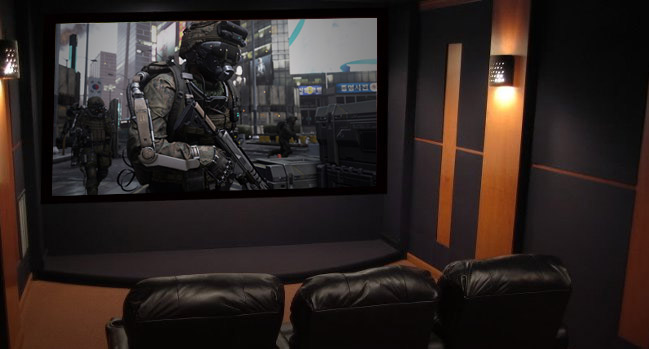
SHORT THROW GAMING PROJECTOR RECOMMENDATIONS
Optoma GT1080HDR
1080p Full HD
S/Throw Home Projector

- 3800 ANSI Lumens
- 50,000:1 Contrast
- REC709 Colour
- Short Throw
BenQ X500i
2160p 4K LED
S/Throw Home Projector

- 2200 ANSI Lumens
- 600,000:1 Contrast
- Fast Gaming Mode
- Android 11 Inbuilt
Optoma GT2160HDR
2160p 4K
S/Throw Home Projector
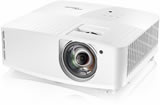
- 4000 ANSI Lumens
- 1,200,000:1 Contrast
- REC709 Colour
- Short Throw
LONG-THROW GAMING PROJECTOR RECOMMENDATIONS
Optoma HD28e
1080p Full HD
Home Projector
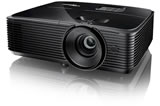
- 3800 ANSI Lumens
- 30,000:1 Contrast
- Best Under $1k!
Optoma HD30HDR
1080p Full HD
Home Projector

- 3800 ANSI Lumens
- 50,000:1 Contrast
- 4K & HDR Compatible
- Fast Gaming Modes
ViewSonic PX701-4K
2160p 4K
Home Projector

- 3200 ANSI Lumens
- 12,000:1 Contrast
- Fast Gaming Mode
Optoma HD39HDR
1080p Full HD
Home Projector

- 4500 ANSI Lumens
- 50,000:1 Contrast
- Fast Gaming Modes
ViewSonic PX749-4K
2160p 4K
Home Projector

- 4000 ANSI Lumens
- 12,000:1 Contrast
- Fast Gaming Mode
- Xbox Certified
- Harman-tuned Speaker
Optoma UHD35+
2160p 4K
Home Projector

- 4000 ANSI Lumens
- 1,200,000:1 Contrast
- Fast Gaming Mode
BenQ TK710
2160p 4K Laser
Home Projector

- 3200 ANSI Lumens
- 600,000:1 Contrast
- REC709 Colour
BenQ TK710STi
2160p 4K Laser
S/Throw Home Projector

- 3300 ANSI Lumens
- 600,000:1 Contrast
- REC709 Colour
- Smart Media Player
- Short Throw
Optoma Wave 130RK
2160p 4K Laser
Home Projector

- 4000 ANSI Lumens
- 2,300,000:1 Contrast
- 98% REC.709 Colour
- Fast Gaming Mode
BenQ X3100i
2160p 4K LED
Home Projector
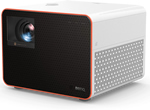
- 3300 ANSI Lumens
- 600,000:1 Contrast
- 100% DCI-P3 Colour
- Fast Gaming Mode
- Android 11 Inbuilt
ViewSonic V57-4K
2160p 4K RBG Laser
Home Projector
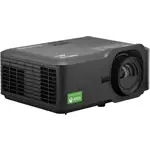
- 5200 RGB Laser Lumens
- 3,000,000:1 Contrast
- Triple Laser
- 100% BT.2020 Colour
- 2025 Projector of the Year